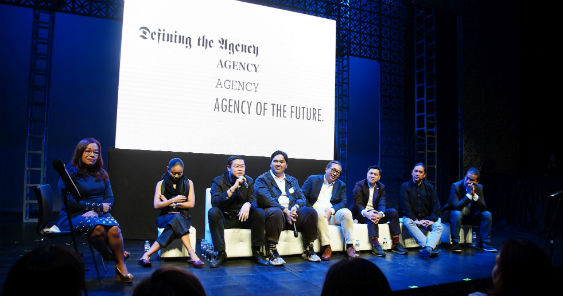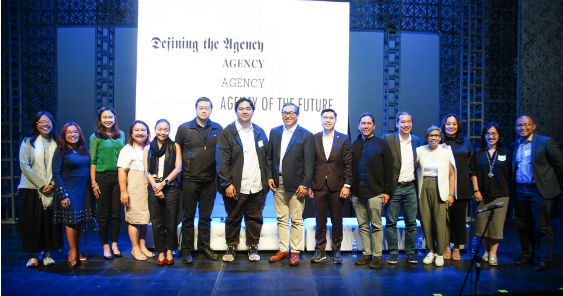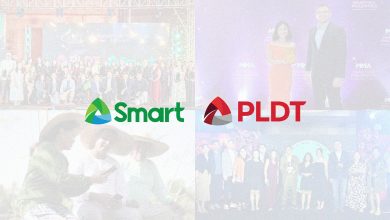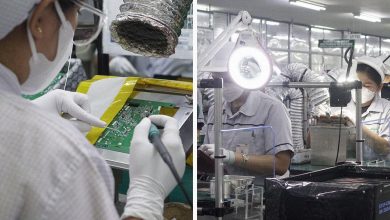by Wacky Torres
It was supposed to be a feisty affair with enough tea to spill and spare. But the joint general assembly of IMMAP, PANA, MSAP, and 4As entitled ‘Defining the Agency of the Future was something more of a hand-holding session instead of the verbal slugfest it was billed to be. If anything, the more scathing statements were self-directed, setting the tone for two hours of much needed (and at times, painful) introspection.
As a young creative, I only have a general grasp of the business side of things (I’m working on it, okay). But I do know that we are working in uncertain times, which is terrible because clients pay us to know better. And now that we’re caught on the back-foot, they’ve turned elsewhere for digital guidance. Just like Channing Tatum’s character in 21 Jump Street, agencies suddenly realized that they’re not the popular kids they once were, and in the desperate scramble to catch up, they tried adopting the hippest buzzwords for show while structure and work processes remained largely the same. It didn’t take long for everyone to see past the disguise.
Honestly, arriving a definitive “agency of the future” at this point of time is a long shot. But that doesn’t mean we’re diving head-first into the dark. We all could do with a little more sober analysis and a lot less fear mongering. Slowly, the rules and patterns of this new game are slowly beginning to unravel. The challenge for agencies is to put all these pieces together to form a coherent and actionable strategy.
The Game Changes
In video games and Geek-enese, theorycrafting is the analysis of game mechanics to determine the optimal strategy to win. It’s something agencies need to do in the face of industry-wide trust issues and digital disruption before doing anything rash, or worse – not do anything at all.

New players have arrived and firmly established themselves as agencies, burdened by age and scale, have been slow to change their style of play. In this updated version of the game, agencies were essentially “nerfed” (read: weakened) by: 1) Jon Mandel’s explosive revelations over agency kickbacks, 2) the continuous growth of Google and Facebook, and 3) the introduction of new characters (e.g. consulting companies) who managed to carve their place in the ensuing chaos.
Firstly, to make sense of the situation, we have to determine the given (parang grade school word-problem-solving lang yan, fam) before proceeding. Theorizing the ‘agency of the future’ was the objective of the panel discussion. But in actuality it was mostly an exchange of individual narratives and hypotheses. However, if taken as a whole, these various inputs provide quite a detailed snapshot of our current predicament. While the ‘agency of the future’ is still a vague idea, the needs we have to address today are becoming clearer and clearer.
Noted with Notes
Every patch (an updated version of a video game) comes with ‘patch notes’ which is simply an overview of all the changes made by game developers. This gives players a better idea of how to optimally play the ‘new’ game and maximize their chances of winning. During the session, I diligently took down notes for the sake of sharing because theorycrafting is better and faster done as a collective. So here are some of the chunkiest bits from the meeting in no particular order:
-Contrary to what agencies would want to believe, some clients aren’t looking for a one-stop shop.
“The tendency to go for one stop shop is indicative of the lack of confidence of the marketer. It is our lack of confidence in our own creative judgment as marketers which makes us dependent on a one stop shop to do all the thinking for us.” -Paolo Mercado, SVP Marketing, Communication & Innovation, Nestle Philippines
-Sharper clients realize that agencies can’t give them everything for their digital transformation needs.
“The agency’s role is so associated with marketing (communication)…and if you like – digital marketing – maybe a little e-commerce but it doesn’t go beyond that. And if you talk with your strat planner, no matter how brilliant, it stays in the realm of communication, rather than transformation conversation.” -Margot Torres, Managing Director, McDonald’s Philippines
-The much-maligned procurement department exists for a reason.
“Procurement is there because companies like Nestle are under tremendous pressure. We are under tremendous pressure because our business models are actually aging. A lot of our products and brands are being challenged by low priced challengers. The cost pressure on us, not only locally, but globally is tremendous.” -Raymond Arrastia, CEO, Publicis One
-Clients will go where they can get best value for talent. The question is: are agencies still attracting the best talent? Or are they losing them to the sexy, lean, and agile players?
“We’re looking for value. So whether that value comes from ideas, in brilliant talent, we’re going to go where we find that value (e.g. consultancies, networks, boutique agencies)… people are everything… We’re going to put money where there is most value.” – Anna Legarda-Locsin, Head of Communication, P&G Philippines
-Marketers have to pick up some slack too. They can’t unload the burden of transformation on their agencies and use that as justification for failure.
“If companies do not recognize that creativity must come from within the client, creativity not in communication, but creative thinking, creative strategy, real depth of understanding of the consumer. If these skills are not in-sourced and we don’t know how to orchestrate ourselves, it will really spell the slow or rapid death of our own organizations.” -Paolo Mercado, Head of Marketing & Consumer Communication – Greater China Region (yes, he has two major roles)
-What we used to consider sacred may not be as sacred as it seems.
“I grew up in a very traditional setting, and in that traditional setting you couldn’t deliver the work to a client without making it perfect…but actually if you work with content creator today, they’re just gonna slap a camera over there. They’re gonna unbox the thing, and they’re gonna be real.” – Leigh Reyes, President, MullenLowe Philippines
-The plus side of great uncertainty is great opportunity.
“There’s an opportunity for everybody. Everyone is in learning mode.” – Jeff Saez, President and Chairman, NuWorks, & Sober Voice of Reason
“Anyone can play the game.” -Angel Guerrero, President, Founder and Editor-In-Chief, Adobo Magazine
(There were many more amazing sound bites – both painful and inspiring – from the session. If you’re interested, you can still catch the full video on adobo magazine’s Facebook page:
Theory & Practice
The points and arguments raised were enough to paint a vision in broad strokes. But though tedious and abstract, theorycrafting is the easy part. The real challenge is putting it into practice because that takes equal parts commitment and madness. Echoing Donald Lim’s stinging challenge at the end of the discussion, “At the end of today, what would change?…You will go back to work tomorrow and you’ll be doing the same thing.”
Agencies keen on the uptake have already restructured their organizations and ways of working. Some are future-proofing themselves while the others took the expensive gamble of future-shaping. But regardless of what route you take, the future we’re so afraid of will eventually arrive.
Luckily, we have no other choice but to do what we do: get creative.










